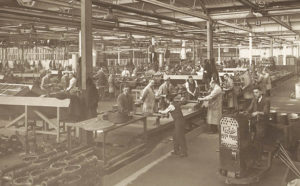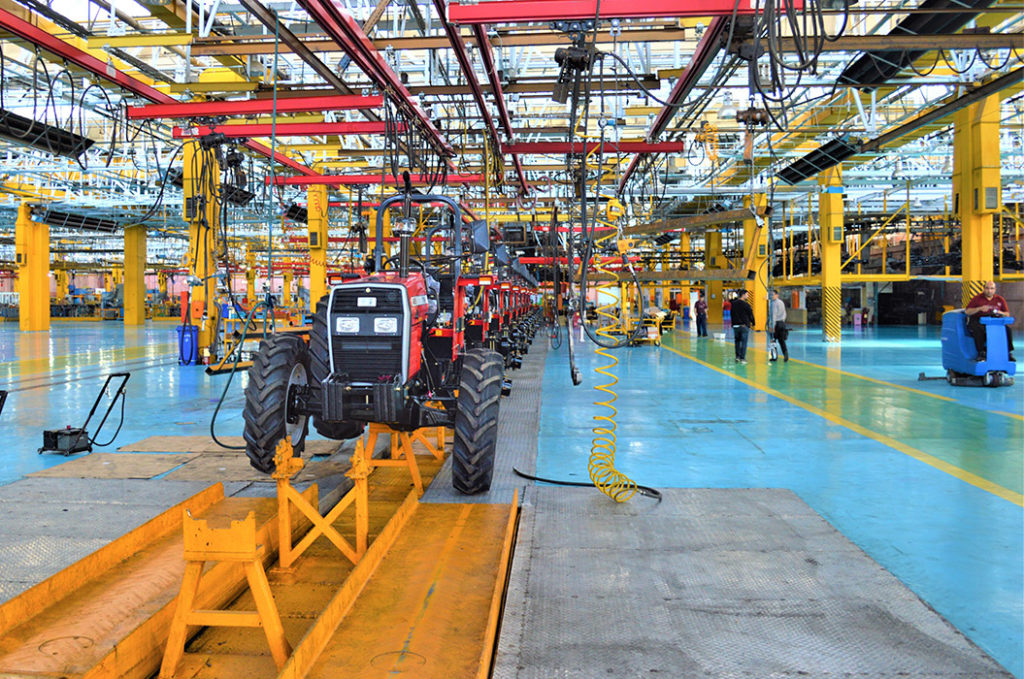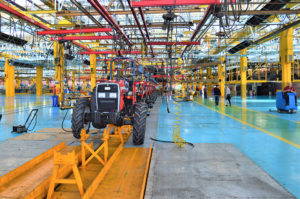
When most people think of manufacturing, they think of an assembly line—classic Henry Ford motor car production lines for example. The benefit of that system was the repetition brought about increasing consistency and a high number of finished items to be sold. This would be a classic example of low-mix, high-volume line (LMHV); where you could “…have a car painted any color you want, as long as it’s black.” Manufacturing has changed since the time of the Model T. Today, many manufacturing lines in the United States utilize a “high-mix, low-volume” (HMLV) environment; often referred to as a “Job Shop.”
The Job Shop Processes
In talking with companies around the globe about the benefits of an MES, the topic of a “Job Shop” often arises. We thought it beneficial to further clarify HMLV, and where there are opportunities. In an Industry Week article covering continuous improvement for high-mix/low-volume production, Jason Piatt sited 5 steps to improving profitability in the job shop environment…
- Utilize Sequential Processing Where Possible
- Stay Simple with Routings
- Implement a Predictable Process
- Create an Open Environment
- Maintain Flexibility
A good MES system will assist in achieving ALL of those aspects, from sequencing through standardization, while still providing for the flexibility needed in a highly fluid production environment. This allows everyone not only to see what’s going on but allows for adjustments, all while increasing communication throughout the organization.
HMLV (High-Mix, Low-Volume)
A job shop will not do a production run of 1,000’s of items before changing, their focus shifts much more frequently. Consider a tractor manufacturer. They might get an order for 1, 3 or 5 tractors at a time, which could take weeks or months to move through the plant. Thus a very long cycle from the time of order to when the machine is ready for delivery – “a job.”
The job might be 3 of the same tractor (low volume), but the floor might have 100 hundred different jobs at the same time (high mix). In addition, various jobs may utilize many of the same facilities, welding, painting, final assembly, etc. So they may be actually “competing” for the same resources. This plant's production is often limited by capacity or the number of shifts, and their ability to manage resources effectively.
Compare this to a company that makes standard products for retail, let's say hammers. They may make thousands (high volume) of the same item (low mix) every day, moving them down the production line, and then putting them into stock. Additional products and production lines can introduce complexity, but often with far less “competition” for resources. An LMHV company has a much different routine, and with it different needs as far as their visibility in production.
HMLV Visibility and Job Cost
Why does an MES align well to the “job shop,” HMLV environment? A few of the key reasons…
- Job shop’s often have complex items, taking weeks or months to move through the plant. Due to this, it's critical to have real-time visibility into these jobs. So that one can tell if the job is started, 10% done, stalled, 99% done waiting on a back-ordered part, or ready to be shipped. An MES provides all this information due to people reporting their time. An MES allows insight into a job’s status at any given time.
- This real-time visibility extends to the inventory status of componentry. Imagine a large tractor just has its engine installed in the chassis on the line. MES allows you to “consume” that engine out of inventory and moves into Work In Process (WIP). While it might be weeks before this tractor is shipped, everyone knows the engine is “gone.” More specifically, planning systems and buyers need to be aware. Without MES and active reporting, the system might still show this engine as in stock; while it's still in the building, it’s now installed in a tractor.
- Another significant benefit of an MES to a job shop is helping to understand the true cost of building a product. Their complex items regularly have a great deal of labor required, often specialized skills. Native reporting in MES allows them to collect labor efficiently. Back to our tractor again, imagine a couple of years later, the customer returns needing 2 more machines but notes a competitor offering theirs at a discount. Utilizing different features of their MES, that tractor builder can gather its data on costs and time needed to build the last one, and quickly determine how they can compete. Allowing quicker and more accurate communications with current customers to keep good standing relationships and clear expectations.
MES Investigation
While an MES intuitively tends to align best with job shops, there are many reasons an MES aligns well with several categories of companies. In particular, Paper-Less MES has items such as Native Kanban and Quality Testing that contribute to key functions needed within a range of manufacturers. At ISE, we often uncover a variety of circumstances where an MES can aid in superior job performance.
Back to our retail hammer company… Almost all companies see the value in “job shop” offerings. New product offerings often start as short “jobs”, specialized products offer differentiation, often at higher margins. An MES solution can be implemented in targeted areas of the production floor, aligned to the unique requirements in that area. With that, it allows direct impact on understanding the profitability and viability of a specific job, big or small. In short, a quality MES system will help improve your company’s manufacturing visibility and velocity.





